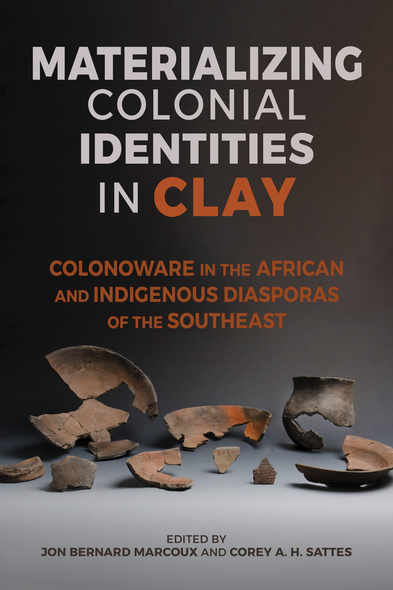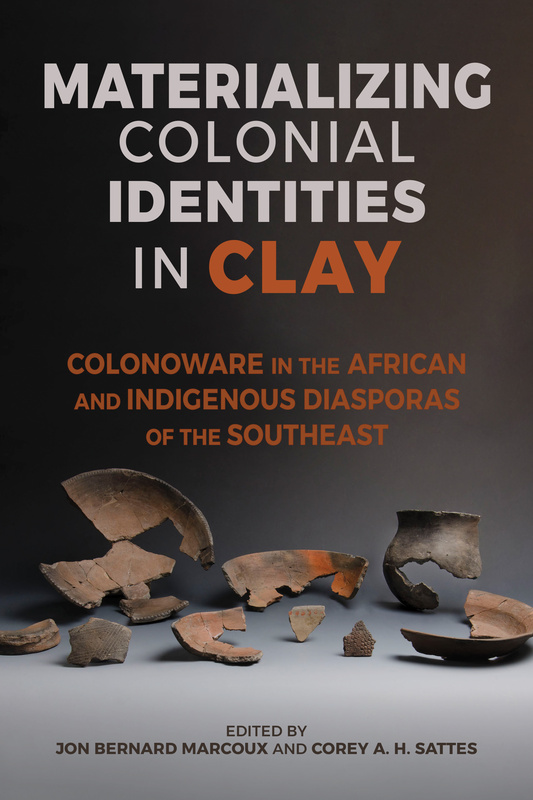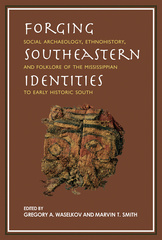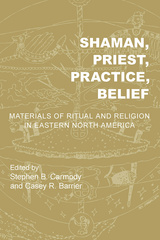
296 pages, 6 x 9
33 B&W figures - 9 maps
Paperback
Release Date:30 Apr 2024
ISBN:9780817361464
Materializing Colonial Identities in Clay
Colonoware in the African and Indigenous Diasporas of the Southeast
Edited by Jon Bernard Marcoux and Corey A. H. Sattes
University of Alabama Press
In Materializing Colonial Identities in Clay, Jon Bernard Marcoux, Corey A. H. Sattes, and contributors examine colonoware to explore the active roles that African Americans and Indigenous people played in constructing southern colonial culture and part of their shared history with Europeans.
Colonoware was most likely produced by African and Indigenous potters and used by all colonial groups for cooking, serving, and storing food. It formed the foundation of colonial foodways in many settlements across the southeastern United States. Even so, compared with other ceramics from this period, less has been understood about its production and use because of the lack of documentation. This collection of essays fills this gap with valuable, recent archaeological data from which much may be surmised about the interaction among Europeans, Indigenous, and Africans, especially within the contexts of the African and Indigenous slave trade and plantation systems.
The chapters represent the full range of colonoware research: from the beginning to the end of its production, from urban to rural contexts, and from its intraregional variation in the Lowcountry to the broad patterns of colonialism across the early American Southeast. The book summarizes current approaches in colonoware research and how these may bridge the gaps between broader colonial American studies, Indigenous studies, and African Diaspora studies.
A concluding discussion contextualizes the chapters through the perspectives of intersectionality and Black feminist theory, drawing attention to the gendered and racialized meanings embodied in colonoware, and considering how colonialism and slavery have shaped these cultural dimensions and archaeologists’ study of them.
Colonoware was most likely produced by African and Indigenous potters and used by all colonial groups for cooking, serving, and storing food. It formed the foundation of colonial foodways in many settlements across the southeastern United States. Even so, compared with other ceramics from this period, less has been understood about its production and use because of the lack of documentation. This collection of essays fills this gap with valuable, recent archaeological data from which much may be surmised about the interaction among Europeans, Indigenous, and Africans, especially within the contexts of the African and Indigenous slave trade and plantation systems.
The chapters represent the full range of colonoware research: from the beginning to the end of its production, from urban to rural contexts, and from its intraregional variation in the Lowcountry to the broad patterns of colonialism across the early American Southeast. The book summarizes current approaches in colonoware research and how these may bridge the gaps between broader colonial American studies, Indigenous studies, and African Diaspora studies.
A concluding discussion contextualizes the chapters through the perspectives of intersectionality and Black feminist theory, drawing attention to the gendered and racialized meanings embodied in colonoware, and considering how colonialism and slavery have shaped these cultural dimensions and archaeologists’ study of them.
‘Materializing Colonial Identities in Clay speaks to the diverse historical contexts and material forms of colonoware and highlights the ways in which colonoware was used by all peoples of the Southeast in ongoing cultural negotiations. The multisited approach taken by many authors is absolutely essential in moving forward our understanding of colonoware, colonialism, and its legacies.’
—Barbara Heath, author of Hidden Lives: The Archaeology of Slave Life at Thomas Jefferson’s Poplar Forest
Much more than a book about pottery, this volume employs colonoware as a tool for exploring the complex cultural negotiations taking place in the historic Southeast. This volume deftly weaves together the many threads of colonoware research to date, offering new models for material culture analyses in such contexts. An insightful work of this kind has been long overdue.’
—Lindsay Bloch is editor of Southeastern Archaeology and Principal for Tempered Archaeological Services, LLC.
Jon Bernard Marcoux is the director of the joint Graduate Program in Historic Preservation at Clemson University. He is author of Pox, Empire, Shackles, and Hides: The Townsend Site, 1670–1715, and The Cherokees of Tuckaleechee Cove.
Corey Sattes is an adjunct professor of anthropology at the College of Charleston.
Corey Sattes is an adjunct professor of anthropology at the College of Charleston.







